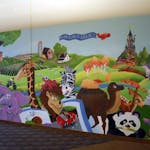A facial-recognition disorder could have been a hardship for a wedding photographer, but Matthew Brenengen learned to make do: The bride was the woman in the white dress and the groom had a unique boutonniere.
Beyond that, his medical condition made things trickier.
"I could edit 1,200 photographs of the couple," he said, "but when the bride … came to pick up her photos, the only way I would know it was her was that she was at my office at the time she was scheduled to be there."
Few treatments exist for the disorder, known as prosopagnosia, which in milder forms can make it hard to recall faces but in severe forms can make people look featureless and identical, even when they're standing side by side.
Bethel University and assistant Prof. Sherryse Corrow are out to change that.
The Arden Hills institution is one of four universities nationally — the others are Harvard, Dartmouth and Boston University — that are testing training protocols that can help the brain recognize and distinguish faces. Corrow said the slow uptake of prosopagnosia research is surprising, considering that as many as 2% of people have problems with facial recognition, which can make it harder for children to make friends, teens to develop socially and adults to maintain relationships and jobs.
"It's like every day is the first day of school," Corrow said.
Corrow first studied prosopagnosia while earning a doctorate at the University of Minnesota, then tested training methods at the University of British Columbia before returning to her hometown three years ago and accepting a faculty position at Bethel. While a researcher in England is studying a pharmaceutical solution with an opioid medication, Corrow said she hopes that simple computerized training could work instead.
"We show improvement, but no cure," said Corrow. Her Bethel training program is just starting, but she expects her group's research results in Canada to be published soon.
At Bethel, patients are asked to look at a computer screen that displays a series of faces that are assigned names and then identify them. The images exclude hairstyles and clothes that could make the faces easier to recall. Once patients pass the first round, the training program makes the faces less distinctive and more like one another. And they try again.
"It's really hard," Corrow acknowledged.
The goal for now isn't to cure the patients, but rather to improve their success rates — perhaps from 50-50 guessing to correctly identifying people 80% of the time.
If there is a spectrum to prosopagnosia, Brenengen figures he is on the low end. But it does create its share of embarrassments for the St. Paul man, a full-time personal injury attorney who also worked for several years as a photographer.
At a deposition, he recognized everyone except the woman seated across the table.
"It was my client," he said.
He couldn't pick out his own nephew from other kids recently when picking him up from a summer camp.
"There were times, too, I couldn't recognize my own kids," he recalled. "You dress them all up in tee-ball uniforms and send them out in the field, and I couldn't tell which kid out there was mine."
Brenengen participated in one Bethel study that was designed to identify the different levels of prosopagnosia that people experience, but he hasn't received treatment.
He relies on compensatory strategies, such as remembering people by noting their body positions, clothing styles, emotional expressions or other visual cues. It's actually useful in his work as an attorney, he said, because it's taught him to detect when people are lying or aren't finished talking. His wife helps in social engagements by listing people they will see beforehand and saying their names when greeting them.
Most cases of prosopagnosia emerge in early childhood, which makes it difficult because kids don't know that their visual perceptions are abnormal. Parents often can't recognize the problem unless they've heard of the disorder. Adult cases can result from strokes or other brain injuries.
'They just can't remember it'
Corrow said researchers still have many questions about the disorder, including how to distinguish a clinical-level problem from occasional forgetfulness.
The disorder might cause other deficits, such as difficulty recognizing objects and following directions, or tone deafness. Some researchers believe it might affect reading because word recognition is controlled by a portion of the brain's left side that is parallel to the portion on the right side that governs facial recognition.
And, despite anecdotal evidence that the training works, there are questions about the approach, including whether studying two-dimensional faces on a computer screen will help people in the three-dimensional world. Bethel's training system tries to compensate for that by rotating the faces at different angles and giving them different expressions and emotions.
Corrow is organizing her first group of study participants at Bethel so she can prove the training works — and fine-tune it for patients with different needs. Some patients have "apperceptive" forms of the disorder and can't distinguish faces of people or pictures in front of them. A more common form is "associative," in which people can see a face's features only in the moment.
"They'll tell you if it's attractive or not," she said. "They can answer whether it's a happy face, whether it's a beautiful face. They just can't remember it later."
![Attorney Matthew Brenengen poses for a portrait ] LEILA NAVIDI • leila.navidi@startribune.com BACKGROUND INFORMATION: Attorney Matthew Brenenge](https://arc.stimg.co/startribunemedia/OKPRXQKDW3VF5NYMV2I6BBNZJ4.jpg?fit=crop&crop=faces&w=550&&auto=format)



